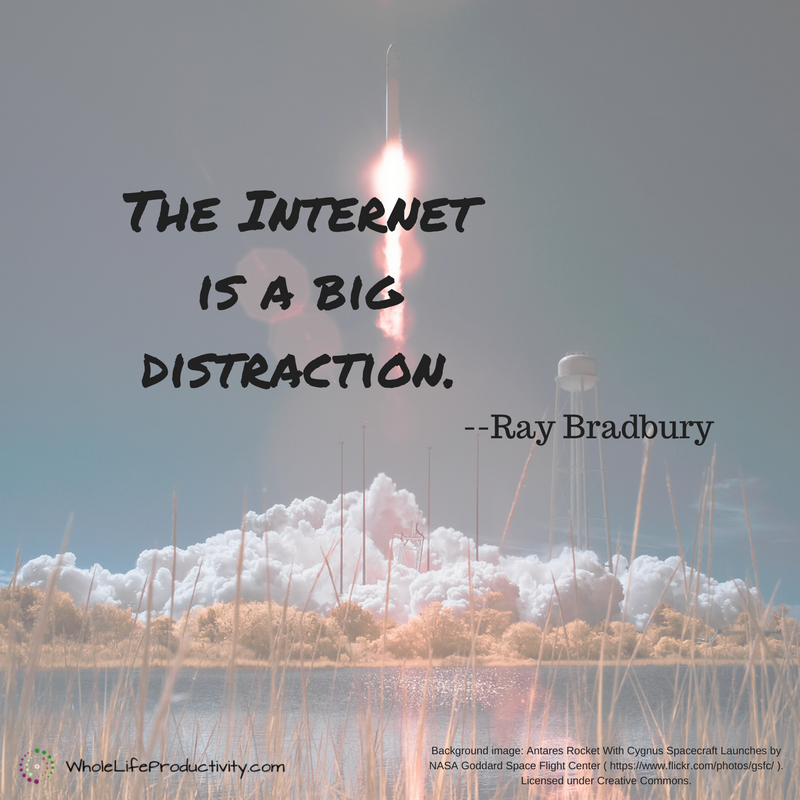
How Complicated Is Your Productivity?
There are so many systems out there that promise that if you simply follow the steps, you will achieve peak productivity. But most of these systems are mired in beauacracy, causing you to work to maintain your system – sometimes doing more work to maintain the system than actual work! Today we will look at the warning signs of a complicated productivity system.
I’ve tried just about every system out there for productivity, and I see how quickly something simple can become mired in rules and processes. It’s part of human nature to complicate things, I think.
The Danger Of Complicated Systems
Complicated productivity systems abound. There are those that have complex formulas to calculate what to do; those that have you schedule everything on your calendar and shuffle things around when something runs over; there are those that have you list out every possible step in preparation for doing the work.
They’re not just recent systems, either. Even with the paper planners of the last century, there were specific actions for prioritizing tasks, and if you didn’t complete things, you rewrote them on the next day.
People do these things because they are convinced that the complication of the system is what makes it successful. But in reality, maintaining a complicated system is dangerous: you are doing work about work, rather than doing the work itself.
And with all problems, the first step to finding a solution is to recognize that there is a problem.
How To Tell If Your System Is Too Complicated
So let’s take a look at some warning signs that your productivity system is too complicated.
How many steps to enter a project or task
For this article, I’m going to define a project as a group of related do-able tasks that will reach a specific outcome. The goal of having projects, is to group the tasks and help you figure out other tasks that need to be done. The faster you get these groups of tasks into your system, the sooner you can start work on them. You also want a system that is so easy to use that everything gets captured, and where you can start working right away without any fiddling.
The first thing you want to take a look at is how many steps it takes to get a project in the system to the point where it is workable. This isn’t just about putting the words down, but any classification, prioritization, scheduling, defining sub-tasks or other actions.
For example, in Getting Things Done, you have to assign next actions to your projects. With Covey, you need to assign it a quadrant. In Autofocus, you add the task to a specific place in your lists.
In some cases, you also need to look at where you have to enter it. Is it accessible at all times? Only at work? Only with an internet connection? The longer it takes to get the project into the system, the more likely you will have holes where things didn’t get entered.
How long it takes to find the next thing to do
This is a big one…many people get stuck because they are not working on the next right thing.
Some systems would have you put in all foreseen steps into your tracking system, and change them as necessary. Some systems have you put the next thing in the system, and assume you have done all the proper thinking before that time (and that nothing has changed). Some systems have you wade through huge lists, picking out “what feels right.” Some systems have you consider where you are and pick from all the things you could do there. Some systems have you maintain all of your tasks on a project sheet, and you have to flip through your projects to find the outstanding tasks.
A good system should make it easy to pick what you need to do next – without wasting effort, causing you to re-think and re-plan, or juggling tasks around.
How long it takes to mark something complete
The last aspect of productivity systems to consider is how long it takes you to mark something complete. This is not just the action that completes the project or tasks, but everything that must be done either before or after.
For instance, in Getting Things Done, completing a task means you decide on the Next Action. In Autofocus, it’s entering the next task on a specific page. In all systems, completing a task means you have to assess if the project is done and complete it there too.
Finishing a task should require minimal action in minimal places.
Conclusion
So how complicated is your system? Are there ways that you could simplify what you have to do? Simplify the process, and you’ll spend less time doing meta-work and more time doing real work.
Like this article? Share it on social media!
Image by Caio Jhonny. Licensed under Creative Commons. Text added.




